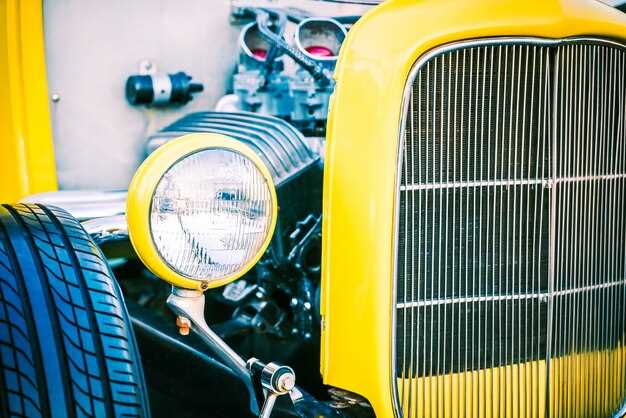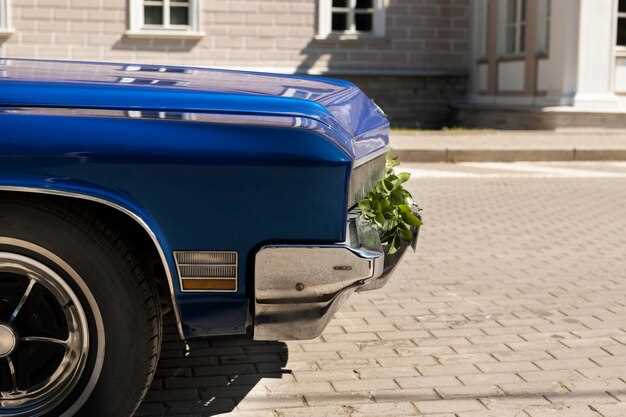
Choosing the right tires for classic cars is a critical aspect of maintaining their performance and safety. Classic cars, renowned for their unique style and engineering, require tires that not only complement their aesthetics but also provide the necessary grip and handling characteristics. In this article, we will explore the top performance tires specifically designed for classic automobiles, highlighting their features, benefits, and potential drawbacks.
Performance tires for classic cars differ significantly from modern alternatives, as they need to accommodate vintage driving dynamics while supporting updated driving standards. These tires are crafted with special compounds and tread designs to enhance both traction and stability on different road surfaces. Understanding these elements is essential for any classic car enthusiast or owner seeking to optimize their vehicle’s performance and, ultimately, preserve its heritage.
We will review a selection of standout tires, discussing their specifications in detail. From all-season options to street-ready performance tires, this guide aims to provide a comprehensive overview, helping you make an informed decision tailored to your specific classic car model and driving preferences. Whether you’re looking for enhanced grip during spirited drives or a comfortable ride for weekend cruises, the right tires can elevate your driving experience to a whole new level.
Choosing the Right Tire Size for Classic Car Models

Selecting the appropriate tire size for classic cars is crucial for both performance and aesthetics. Classic cars often have unique demands due to their vintage design and suspension systems. Understanding tire size specifications and their impact on driving dynamics is essential for any classic car enthusiast.
Initially, consult the vehicle’s owner manual or the tire placard, which is usually located in the door jamb or glove compartment. These sources provide the original tire size recommended by the manufacturer, ensuring optimal fit and performance. Original sizes often include a three-digit number (for example, 205) followed by an aspect ratio (such as 70) and a rim diameter (like 15), forming a tire size like 205/70R15.
When selecting tires, consider the aspect ratio, which influences the tire’s height relative to its width. A lower aspect ratio typically results in better handling and performance, while a higher ratio can enhance ride comfort. Classic vehicles often benefit from a balance of both, so aim for tires that complement the car’s intended use, whether it’s daily driving, cruising, or show purposes.
Additionally, pay attention to the load index and speed rating. The load index indicates how much weight each tire can support, which is critical for ensuring safety and stability, particularly with heavier classic models. The speed rating indicates the maximum speed a tire can safely maintain, which should align with the vehicle’s capabilities.
Another important factor is the tire width. Wider tires can improve traction and cornering but may require modifications to fenders or suspension. When upgrading, maintaining the correct tire width is essential to avoid rubbing against the body or suspension components.
Finally, consider tire type. Many classic car enthusiasts opt for all-season or performance tires based on their driving conditions. Specialty tires designed for classic cars often feature vintage-style tread patterns, enhancing the car’s original appearance while providing modern performance characteristics.
In summary, choosing the right tire size for classic car models involves a careful assessment of original specifications, the intended use of the vehicle, and personal driving preferences. By considering these factors, owners can optimize their classic cars’ performance and maintain their cherished aesthetics.
Comparative Analysis of Performance and Durability in Tires
When selecting tires for classic cars, understanding the balance between performance and durability is crucial. Performance tires are designed to enhance handling, traction, and responsiveness, while durability focuses on the tire’s ability to withstand wear and adverse conditions.
Performance is often measured through factors such as grip, cornering stability, and braking distances. High-performance tires utilize softer rubber compounds that increase traction but may wear out faster. These tires are engineered for optimal performance in specific conditions, such as dry or wet roads. For instance, a tire designed for racing may offer superior grip at high speeds but may not be suited for longevity.
On the other hand, durability involves the tire’s lifespan, resistance to punctures, and performance consistency over time. Tires constructed with advanced materials and reinforced sidewalls tend to provide better durability. Classic car enthusiasts often seek tires that retain their performance benefits throughout their lifespan, offering a balance between traction and wear resistance.
In practical terms, the trade-off between performance and durability often leads to the selection of tires that may excel in one area while compromising in another. For example, a tire that offers exceptional gripping may provide less mileage than a harder compound tire designed for longevity. Therefore, classic car owners must prioritize their driving needs; whether they favor spirited driving on weekends or prefer a more enduring option for everyday use.
Furthermore, it’s essential to consider the specific vehicle and conditions under which it will be driven. Vintage cars, often lacking modern suspension setups, may benefit more from tires designed to absorb road imperfections rather than solely focusing on performance metrics. Conducting a thorough analysis of both tire types’ strengths and weaknesses will lead to a more informed decision that enhances the overall driving experience of classic vehicles.
Top Brands for Classic Car Performance Tires: Features and Pricing

Choosing the right performance tires for classic cars is essential for ensuring optimal handling, safety, and aesthetic appeal. Here are some of the top brands that specialize in performance tires for classic vehicles, along with their standout features and pricing information.
-
Michelin
- Features: Renowned for superior grip, longevity, and innovative tread design.
- Popular Models: Michelin Pilot Sport, Michelin XAS.
- Pricing: Typically ranges from $150 to $300 per tire, depending on the model and specifications.
-
BFGoodrich
- Features: Offers impressive handling and traction, especially in dry conditions, with a retro design suited for classic cars.
- Popular Models: BFGoodrich Radial T/A, BFGoodrich Silvertown.
- Pricing: Generally priced between $120 and $250 per tire.
-
Firestone
- Features: Known for durability and performance in diverse weather conditions; offers classic designs that complement vintage cars.
- Popular Models: Firestone Firehawk, Firestone Vintage.
- Pricing: Cost typically ranges from $100 to $200 per tire.
-
Pirelli
- Features: Delivers exceptional performance with an emphasis on high-speed handling and stability.
- Popular Models: Pirelli Cinturato, Pirelli P-Zero Classic.
- Pricing: Usually falls between $200 and $400 per tire.
-
Continental
- Features: Provides advanced technology for improved safety and performance; known for comfort and low noise levels.
- Popular Models: Continental ContiSportContact, Continental Classic Contact.
- Pricing: Ranges from $130 to $300 per tire.
When selecting tires, consider driving conditions, vehicle specifications, and personal preferences to achieve the best performance and safety for your classic car.
